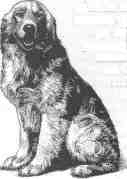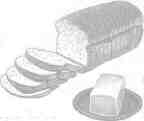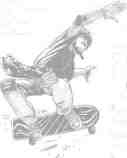Enterprising Minds
Revenue strategies from some of Illinois' most entrepreneurial agencies
BY ANN M. LONDRIGAN
|
These "enterprising agencies" have something in common. They believe their programs and facilities have
great value: value that's worth paying for or partnering with. And, lucky for us, they're not guarded about
sharing their entrepreneurial revenue strategies.
|
Run, Rusty, Run
The Lake County Forest Preserve District
sells permits for use of its four Dog
Exercise Areas, bringing in more than
$50,000 annually to defray operating and
maintenance costs for the sites.
These dog-friendly areas are "wildly
popular" says Andrew Kimmel, CLP,
director of Environmental Education and
Public Affairs for the district, located in
northeastern Illinois and
serving 585,000 people and
managing nearly 21,000
acres of public land.
|

|
"Many communities
have growing concerns
about dogs off-leash in
public spaces, and some
have passed restrictions on
walking dogs in parks,"
says Kimmel.
"This provides a positive
alternative at a reasonable
cost."
How much, then, to let
Rusty run in up to 45 acres
of fenced-in open space and woodlands,
with fenced-in parking as well to keep him
safe from street traffic?
The district charges $25 a year for the
first dog registered and $5 for each
additional dog. Permit-holders receive a
sticker to put on their cars and a special
tag for the dog. Owners must show proof
of rabies vaccination in order to buy a
permit.
|
A daily fee is offered at $2.50 per dog.
People who live outside Lake County pay
$50 for the first dog and $10 for each
additional dog or $5 per day.
Says Kimmel: "We surveyed all
permit-holders to find out what kind of
amenities they liked about the area
and what else they would like to
see. We also asked how far they
were driving to get some sense
of who was using it. We
used that information to
determine the location of
additional exercise areas.
"We look at non-tax
revenues as a means to
provide additional services to people rather
than as making money."
Ventures in Corporate
Conscience
What's the saying? Anyone
can have a great idea, but
the one who can make the
idea a reality is the real genius.
Andy Kimmel shares one
such idea—"Preservation Partners"—
brought to fruition by the Lake County
Forest Preserve District at a cost of
$70,000 annually, using no tax dollars.
Says Kimmel: "Historically, junior high
and high school students are a very hard- to-reach group, so we created this program
to have these students adopt a forest
preserve. They come to their preserve on a
regular schedule for conservation projects
and supplement their visits with educational materials that link to their curriculum.
"They understand what it takes to
manage natural areas, restore habitats, and
November/December 1999 /27
prevent invasive species from taking over."
Enter G.D. Searle Company, the
pharmaceutical company that invented
NutraSweet. Its corporate headquarters is
in Skokie but many of its senior-level
people live in Lake County.
"We were working with Searle on
smaller projects when we proposed this to
them," says Kimmel.
"We knew from Searle's other participation that they have a big concern about
environmental science and science careers
for youth. They also like to link what they
are doing environmentally within their
company to improving their community."
Started eight years ago with four schools
and a $20,000 donation from Searle,
"Preservation Partners" has grown to
involve 20 schools. That adds up to an
average of 400 kids a year giving between
3,000 and 4,000 volunteer hours to the
forest preserve.
The annual donation from Searle, now
at $35,000, is matched with regional, state
and federal grants for environmental
education or habitat restoration. Proceeds
from the district's annual plant sale makes
up the difference, so that no tax dollars are
used for the program.
"Our board supports looking for
alternative funding opportunities wherever
we can," says Kimmel. "If we can find a
way for programs to use non-tax funding,
we try to do that.
"That's been the boards budget policy
for nearly a decade. Partnerships with
Searle and other corporations have
allowed us to greatly expand the number
of programs and variety of services we
offer to the public."
Bread and Butter
|

|
Robert Porter,
director of the
Lemont Park
District,
considers fees and
charges "bread and butter" for his
agency and for at least half of
Illinois' 345 park districts and forest
preserves.
However, 15 to 20 years ago it was a
different story.
"When I started at Lemont in 1975,
they were 97 percent dependent on real
estate taxes," says Porter about his 17,000-
population community located in the
southwest Chicago suburbs.
|
"Now, 54 percent of revenue is other
than taxes. We doubled our income stream
over and above taxes."
Porter says fiscally "aggressive" agencies
are in the "50-percent-up club," with at
least 50 percent of revenue derived from
sources other than taxes. For example, the
Skokie Park Districts ratio is 70/30 (70
percent non-tax revenue and 30 percent
from taxes). The Park District of Highland
Park's is 60/40.
He cites other revenue streams such as
partnerships, corporate development and
sponsorships as effective, especially for
larger districts that are home to larger
companies. However, in Lemont, which
has just four banks and mostly mom-and-
pop businesses. Porter says fees and
charges are the "big ticket."
"Fees are a philosophical approach plus a
financial return," Porter says. "If (patrons)
are putting their money somewhere in a
physical sense, then there is more expectation or obligation to buy-in to the
program.
"Also, you can get a better attendance
pattern. 'I paid for this, I gotta go to this.'"
Making News, Saving Money
In Lemont there's a lot of hype around
town for the quarterly park district
brochure, thanks to the Lemont Reporter,
the local weekly newspaper.
Saving the park district $20,000
annually, the newspaper pays 100
percent of the cost for producing, printing and mailing the
40-page brochure, four times a
year with 10,000 copies
distributed to newspaper
subscribers and 2,000 extras for
the counter.
"(The newspaper) goes
to businesses and asks them to
take out an ad," says Porter. "It's
overwhelmingly desirable because
that brochure stays on the kitchen counter
for several weeks.
"Placement of the ads is critical. The
banks like the back cover. The dental
people will be in the kiddie section. The
auto guys end up in the adult section."
The park district has total control of the
content of the brochure and restricts
certain companies from advertising (e.g.,
no head shops, pure liquor stores and the
like).
According to Porter, the newspaper sells
50 to 150 advertisements for each
brochure and makes a profit.
"Our registration went up 40 percent
because (the newspaper circulation)
pushed it into other counties," says Porter.
"And we now have a better awareness
pattern for our programs and events."
An Ingenious Swap
What a reporter from the Pioneer Press
called an "ingenious swap," Connie
Newport, director of the Park District of
Highland Park calls a "once-in-a-lifetime
opportunity."
They're talking about an intergovernmental partnership with many parts to the
whole.
Part 1: The park district conveyed a half
acre to the city and granted an easement
on it so the city could realign a dangerous
intersection near the Edens Expressway.
The city also used this land to fix a
flooding problem with some storm-water
work.
Part 2: The park district gave the city
one-third of an acre on the same property
so the city could build a new fire station to
replace two aging fire stations.
Part 3: The city paid for and built the
park district's new $5 million water park to
replace its 30-year-old pool, a money-pit.
Part 4: On its own property, the city
built a state-of-the-art golf learning facility
and miniature golf course, worth $ 1
million, which the park district manages
and the city receives net revenues of
approximately $200,000 a year.
"The city spent $6 million, plus the
costs of the fire station, but they solved
several problems and they got their own
revenue stream," explains Newport about
the complex deal, which received tremendous input and support from this north
Chicago suburbs 30,000 residents.
"(The city) solved a safety issue and a
storm-water issue and saved money by
consolidating two fire stations into one."
So, who's idea was it?
"It just evolved once everybody started
28/ Illinois Parks and Recreation
talking about these issues," says Newport.
"The park board and the city council get
the credit for having the vision. Vision
works as long was everybody wins."
Nearly three years later, the pool facility
has gone from a deficit of $40,000 to a
surplus of $140,000. Attendance is up
from 30,000 to 130,000 a year.
With at least one very good friend on
the city council in former park board
member Peter Koukos, Newport says:
"(The partnership has) really solidified our
relationship. It's opened up some doors."
Forced Entrepreneurialism
|

|
"When your debt service is cut off, it's
time to be creative," says Connie
Newport, whose agency last
year received $100,000 cash
for a 15,000-square-
foot skate park in
exchange for an
exclusive 10-year
contract for
district-wide
vending.
The need for a
skate park in
Highland Park
surfaced years ago. Both the police and the
chamber had raised the issue. The park
district began paving its paths, but the
challenge wasn't there for the kids.
"We knew that Coke and Pepsi,
especially, were giving exclusives," says
Newport. "The U of I has an exclusive
with Coke, and we said 'You know we're
not that big, but let's try.'"
|
So they developed an RFP and met,
separately, with Coke, Pepsi, Sprint and
others. Each time, a diagram of the
proposed skate park was shown with the
company logo (e.g., "Coca Cola Skate
Park"), attached by Velcro.
Ultimately, the deal was struck with
Mark Vend, a longtime vendor for the park
district.
"We're one of their biggest clients and,
obviously, this gave them the opportunity
to lock us up for ten years," says Newport.
"The field has been talking about
corporate sponsorship, revenue from
outside of tax money.
"We have no bonding authority. To us
it's a reality."
What's in a Name?
A lot of money, believes Steve Hartman,
director of the Skokie Park District,
located in a northern Chicago suburb.
Last May, the park district hired a corporate sponsorship manager to seek and
negotiate naming rights, marketing rights,
exclusive sales and endorsements for its
facilities, parks, events, and you name it.
"Park districts don't recognize the fact
that they have value to corporations, if
your district has realized success and has a
high citizen approval rating," says
Hartman.
"Traditionally, local ABC individual or
company says they'll give you $100,000
and the park district says 'We will name a
building or park in your name for the
life of the facility.'"
"What happens is that the park
district gets a one-time benefit while the
company gets a lifetime benefit from the
donation. That's where the value is out of
balance."
Since May, Skokie's corporate sponsorship program has
realized $100,000 in
in-kind donations and
$50,000 in cash
sponsorships for
festivals and events.
But Hartman says they
won't feel successful
until they have
corporate names and
that, like a successful
foundation, will take
longer than six
months.
Corporate deals are
in the works for the
district's children's
museum (the
Exploratorium), sports
park and water park. A
name sponsorship for
the Exploratorium, for
example, is priced at
$45,000 a year for five
years.
"We didn't arbi-
trarily assign a dollar
figure to these values,"
says Hartman. "We
used a company called
International Events
Group...experts on the value of sponsorship. They did an inventory for us, told us
what would sell. They valued our properties, gave recommended forms of contracts
and leads."
"It was the best $32,000 we've ever
spent."
"You have to spend money to make
money. When we are successful, this
program will be worth $2 to $2 1/2 million
over five years in sponsorships to the
district."
Currently, the district raises 70 percent
of its revenue from non-tax sources, which
is up from just 35 percent six years ago.
About the future, Hartman says: "I
think it's possible, if you mix your facilities
right and you generate some of this
outside revenue, agencies like ours can be
on a completely pay-as-you-go basis. We
would not have to collect taxes in order to
operate."
ANN M. LONDRIGAN
is the publications director for the Iliinois Association of Pork
Districts and editor of Illinois Parks & Recreation magazine.
November/December 1999 /29


